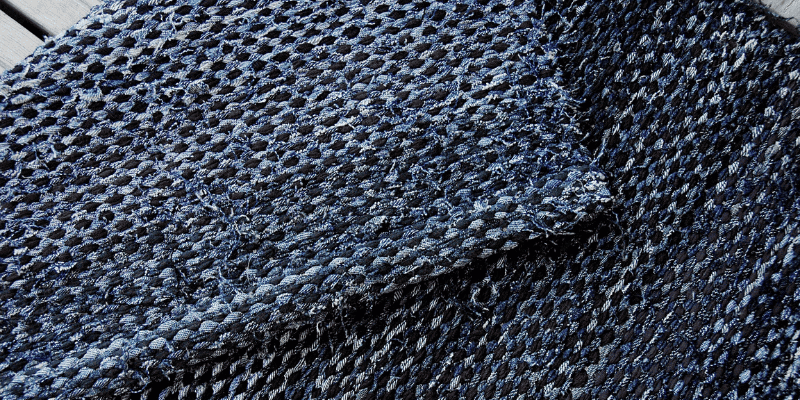When it comes to the flooring inside of your home, often times not much is considered during the purchase and installation of this flooring other than the aesthetic look of the floors in the home, the cost of the flooring, and how durable the material is to last longer in their indoor space. However, although it is important to have a nice looking, cost-effective, and durable flooring in your home, it is also important to consider the potential effects the flooring may have on the indoor space’s air quality and even the health of the occupants that are heavily exposed to this environment. Some flooring materials that are prevalently used in homes may contain toxic materials and components that can act as a significant source of pollution inside of a home. Among the different kinds of flooring materials that are known to be dangerous to an indoor environment is that of Olefin (also known as Polypropylene).
In this article we are going to learn more about what olefin flooring material is, the uses of this material throughout a home, and the various problems that are created in an indoor space due to the toxic nature of olefin material.
What is Olefin
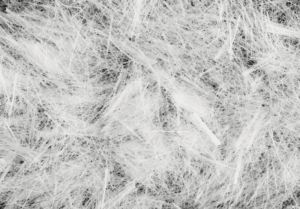 The fabric material olefin is a man-made fiber that was created from plastic pellets that are melted down, and then forced through a spinneret to create the fiber. This synthetic fiber is made from a polyolefin – such as polypropylene or polyethylene. The fibers of this material are thick giving it great bulk and coverage, which makes it the ideal textile to use for carpet flooring. The strength of this material is one of its most important characteristics, and this is because of its ability to keep its strength and durability no matter the conditions that it is exposed to in the environment. Another benefit to this fabric material Is its low absorption capabilities when it comes to moisture intrusions, as the olefin material will wick moisture and self-dry quickly.
The fabric material olefin is a man-made fiber that was created from plastic pellets that are melted down, and then forced through a spinneret to create the fiber. This synthetic fiber is made from a polyolefin – such as polypropylene or polyethylene. The fibers of this material are thick giving it great bulk and coverage, which makes it the ideal textile to use for carpet flooring. The strength of this material is one of its most important characteristics, and this is because of its ability to keep its strength and durability no matter the conditions that it is exposed to in the environment. Another benefit to this fabric material Is its low absorption capabilities when it comes to moisture intrusions, as the olefin material will wick moisture and self-dry quickly.
This industrial, high-durability olefin fabric will also hold up well against abrasions, stains, sunlight, fire, and chemical exposure. The capability of olefin material to withstand so many damaging sources makes it a top option for those homeowners who are looking for a tough, long-lasting flooring material in their home. Although this may seem like the best option for your home, it may be time you learned about what olefin fibers are made of and how these chemical ingredients can influence the quality of the indoor environment of your home.
What is Olefin Fiber Made Of
Have you ever considered how flooring is made and the process that different types of flooring materials go through before being installed into your home? Some of these types of flooring will be constructed through the use of different glues, adhesives, or chemical finishes that provide the material with a certain look, finish, or durability – all of which may contain toxic chemicals that can be spread onto the flooring material and emitted into your home after the flooring has been installed in the space. Olefin fibers are no different from other traditional types of floors, this material will contain a chemical concoction that will lead to the tainting of the indoor air in the environment that the olefin flooring was just introduced into.
The Olefin fiber material is made by polymerizing two compounds, polypropylene or polyethylene in the presence of certain catalysts. When these polymers are melted to convert them into a liquid, this liquid is then made to pass through a ‘spinneret’ that allows the material to go through a series of fine holes to form long-length fibers. The polymers that are used to form olefin will produce another chemical known as ethylene into the material, this is a chemical that is an industrial petrochemical that can be used in the manufacturing of many items such as antifreeze, solvents, surfactants, etc.
Olefins Uses in a Home
You may find it surprising to learn about the many different materials that are used throughout your home to form furniture, upholstery, flooring, and even soft materials like blankets and bedding. Within the average American household, you may be exposed to a variety of fibers and fabrics, some in more plentiful sizes than others like cotton, polyester, etc. Olefin material is a type of fiber fabric that is not as heavily used as cotton or polyester, but it can be used in a mix of different products such as apparel, home furnishings, and even in automobiles.
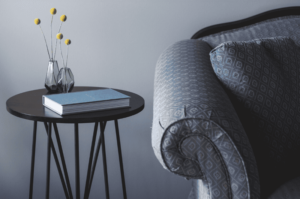 Clothing Apparel: Olefin fabric has been used in a number of different clothing apparel items that have been manufactured over the years. From sports and active wear to give the material its needed durability, to socks and hoodies that will undergo extreme climate changes throughout the day.
Clothing Apparel: Olefin fabric has been used in a number of different clothing apparel items that have been manufactured over the years. From sports and active wear to give the material its needed durability, to socks and hoodies that will undergo extreme climate changes throughout the day.- Home Furnishings: One of the most popular uses of the olefin material is through the use in home furnishings like indoor and outdoor carpeting, carpet tiles, and even carpet backing. Also, this material can be used in upholstery, draperies, wall coverings, slipcovers, and floor coverings.
- Automotive: Another place where olefin material can be used is inside of an automobile. This material has been used before for the interior fabric, sun visors, arm rests, doors and side panels of a car.
Olefin Carpet Problems
As we have learned, there are many advantageous qualities to the olefin carpet material starting at its moisture wicking and durable features. This material can be used as the main carpet material or even for the backing of the carpeting when it is installed onto the flooring of a home. Although olefin is a popularly used carpet in homes for both indoors and outdoors, there are certain problems that olefin carpet can experience or produce into an environment. Olefin fibers are not very resilient and when the material gets crushed it will be hard for the material to regain its original shape. The material also is very sensitive to heat, and if it is exposed to temperatures too high it can damage the fibers of the olefin.
Another problem that homeowners may experience from significant exposure to olefin carpeting could be the chemical array that is emitted into the environment from this “toxic carpet”. As we discussed prior, olefin carpet material is constructed using numerous chemical mixtures to provide the fabric with its ability to be placed as a durable carpeting in a home – including polypropylene and ethylene which can be potentially dangerous compounds that will interact adversely in an indoor environment. These chemical compounds will produce toxic byproducts into the air which when they become inhaled into the human body can cause certain health problems like headaches, allergies, dizziness, or even nausea in some cases, according to Home Quicks.
Olefin vs Polypropylene
It is common that when talking about the fiber olefin you may hear the term polypropylene thrown in the mix as well, which can be confusing for most consumers. The reason behind this interchangeable name for olefin is because of the polypropylene rug material that is in fact used to construct the olefin material fibers. Polypropylene is the second most widely used plastic in the world that is used in olefin materials that are used in home carpeting. Overall, though the differences between these materials is just that olefin is the generic name for the plastic chemical polypropylene – nothing more and nothing less.
Polypropylene (Olefin) Carpet Safety
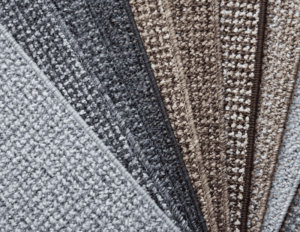 Polypropylene (olefin) carpeting can contain a variety of risks after it has been installed inside of a home, especially in large quantities. The fabric contains a blend of chemical compounds within its construction that will include VOCs, ethylene, polypropylene, etc. all of which when combined will produce potentially toxic chemical fumes into the air space of the environment as the chemicals begin to turn into gaseous compounds (usually from a liquid or solid state to start). The process of polypropylene carpeting releasing chemicals into the air as a gas is what is known as off gassing.
Polypropylene (olefin) carpeting can contain a variety of risks after it has been installed inside of a home, especially in large quantities. The fabric contains a blend of chemical compounds within its construction that will include VOCs, ethylene, polypropylene, etc. all of which when combined will produce potentially toxic chemical fumes into the air space of the environment as the chemicals begin to turn into gaseous compounds (usually from a liquid or solid state to start). The process of polypropylene carpeting releasing chemicals into the air as a gas is what is known as off gassing.
When it comes to maintaining the safety of the environment and the health of the occupants in the space from olefin carpet off gassing there are many solutions that can be integrated to help mitigate these airborne hazards. Filtering the indoor air is one of the most effective ways to mitigate olefin carpet fumes from the air, as well as opening windows and doors to let fresh air intake into the space while the carpeting begins its off gassing period. Generally, however, limiting exposure to this tainted environment is the way to go – and thus that is why it may be recommended that you do not stay in the environment for a few days following the installation of the olefin flooring.
Does Olefin Off Gas?
New materials that are placed into a home have the potential to go through a process that is known as off gassing, where the chemicals that are used in the construction of these products turn from a solid or liquid into a gas at room temperature. The chemical fumes that are released into the air will usually last for an ambiguous amount of time, which is dependent on multiple factors such as the amount of chemicals used, the conditions in the environment, and how much material was placed into the space. If you have just laid down new olefin carpeting inside of your home, it would be assumed that the off gassing of the olefin chemical compounds will be significant in the home and take some time to completely off gas in the space.
Olefin carpeting is a synthetic material that like any other synthetic material will go through the off-gassing process after its installation inside of your indoor environment. These types of flooring materials, like we discussed previously, include a chemical concoction of ingredients like VOCs that can taint the indoor space of a home during its off-gassing process in the environment.
How to Remove Toxic Carpet Chemicals
When it comes to the different carpet materials that you select for your home, there is a list of these carpet materials that are known to be “toxic carpets”. These toxic carpets can emit chemicals into the airspace that will adversely impact the indoor air quality and the health of the occupants that spend large amounts of time in this environment. Some homeowners will unknowingly install “toxic carpeting” into their home without doing previous research into the quality of the material and the potential chemicals that it harbors within the fibers of this carpet.
If you install toxic carpeting in your home, like olefin carpeting, without knowing the risks that it presents to your indoor air quality than you may be in some major trouble after the initial installation of the flooring. The carpet will produce a chemical odor into the confined space of a home and eventually will flood the air with elevated levels of contaminants in the air that will put the health of humans exposed to this environment at risk. What is the best solution for how to remove toxic carpet chemicals from your home’s air? The use of an air purifier for carpet fumes will likely be your best resource to use that will quickly and effectively mitigate chemical compounds from the air of a home that are produced from tainted carpet material.
Air Purifier for Carpet Fumes
An air purifier is a device that is used to clean the indoor air of an environment by pulling in air through the system and filtering out the contaminant matter that is polluting the air quality of the home. There are a variety of air purifiers that are available to consumers that will contain varying technologies that will give the air purifier its capability to filter out certain pollutants from the air, whether that be particulate matter, chemical compounds, or noxious odors. When it comes to looking for an air purifier that can accomplish all three of these pollutant removals from the air, it may be a difficult task to fulfill – especially when you are specifically looking for an air purifier for carpet fumes removal in the air space.
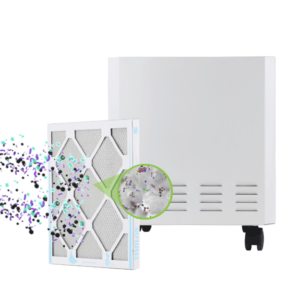 The EnviroKlenz Air Purifier is a revolutionary air purifier that works through a patented earth mineral technology that effectively captures, contains, and neutralizes noxious and toxic chemicals and odors from the air through a safe, non-toxic process. The technology is a one-of-a-kind air filtration technology that will work to actually remove pollutants from the air, rather than storing them on the filter media of an air filter. The EnviroKlenz technology will be effectively capable of neutralizing VOCs and other chemicals from the air that may be produced from olefin carpeting. In addition, the EnviroKlenz Air Purifier also contains a hospital-grade HEPA filter for fine particulate matter removal larger than 0.3 microns in size at a 99.99 percent efficiency.
The EnviroKlenz Air Purifier is a revolutionary air purifier that works through a patented earth mineral technology that effectively captures, contains, and neutralizes noxious and toxic chemicals and odors from the air through a safe, non-toxic process. The technology is a one-of-a-kind air filtration technology that will work to actually remove pollutants from the air, rather than storing them on the filter media of an air filter. The EnviroKlenz technology will be effectively capable of neutralizing VOCs and other chemicals from the air that may be produced from olefin carpeting. In addition, the EnviroKlenz Air Purifier also contains a hospital-grade HEPA filter for fine particulate matter removal larger than 0.3 microns in size at a 99.99 percent efficiency.
Article Sources:
- Wikipedia: Olefin Fiber (link)
- Home Quicks: Pros and Cons of Using Polypropylene Rugs That You Shouldn’t Ignore (link)
Mobile Air System
✓ Patented earth mineral technology works to attack VOCs and break them down on a compound level
✓ No chemicals or masking agents
✓ Will not release any chemicals back into your environment
✓ Safer and faster at removing VOC’s than traditional carbon filters and PECO air purifiers








